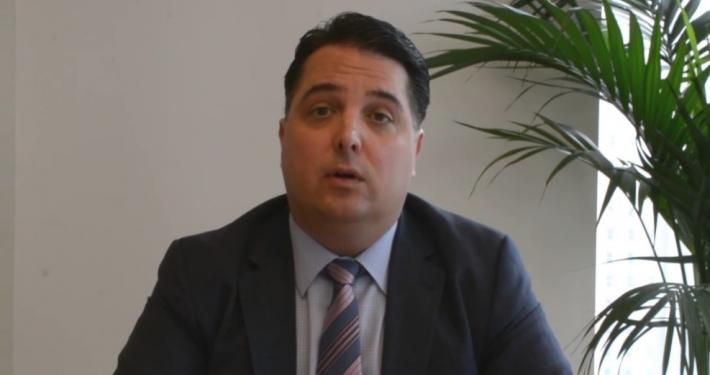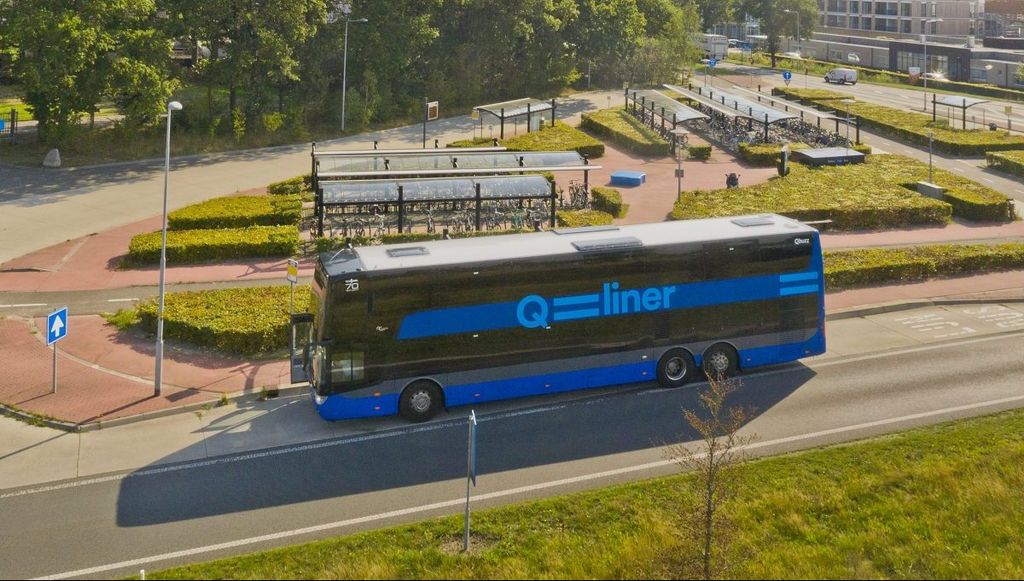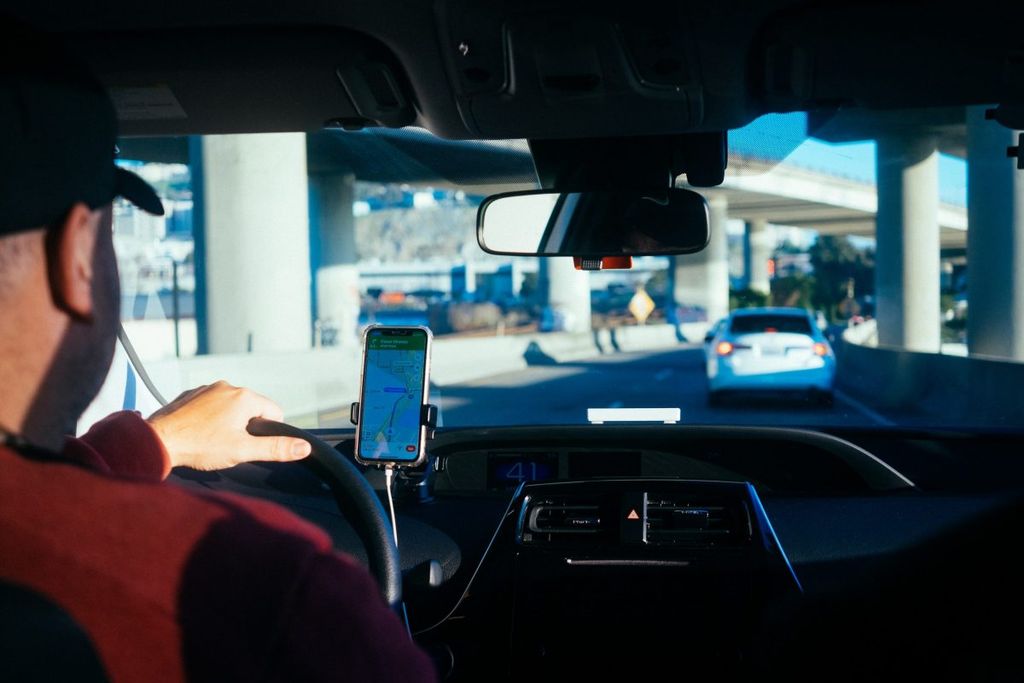
Taxi and Ride-Hailing Conference speakers share their thoughts...Matt Daus of IATR, United States of America
This year, alongside IT-TRANS, UITP is also joining forces with our collaborators at Messe Karlsruhe to bring you the Taxi and Ride-Hailing Conference and Exhibition – the only event of its kind to bring together the taxi sector and the new players side-by-side.
We’ve all taken a taxi. We’ve all called a cab. And since it’s 2020, we’re assuming you’ve all hit up an app.
There’s no doubt we’re familiar with the different ways to bring a ride to your door, work or current standing location…but did you know the ways in which traditional taxis and the new mobility players together within UITP?
The business market has changed in recent years and as these modes now sit together within the UITP international family, our event is an excellent opportunity to learn about the smart solutions with the leading taxi experts from around the world (Karlsruhe, 3-5 March 2020).
For IT-TRANS, we got to know a collection of our speakers a little bit more with our Speaker Series for 2020.
And now as we approach our time in Karlsruhe, our T&RH programme, panel sessions and list of international speakers and participants is taking shape.
Over the next week we’ll be sitting down with several of our Conference speakers to get their thoughts on the event, what they expect from this year’s edition and what’s to come for the taxi sector going forward.
So what better way to get to know what we can look forward to in Karlsruhe than a special sit-down with our speakers!
Up first is Matt Daus
He is the President of the International Association of Transport Regulators and Ex-Commissioner and Chairman of the New York TLC, United States of America.
Q1: Matt, can you tell our readers more about the International Association of Transport Regulators and your role as President?
Sure. The IATR is a non-profit educational organization comprised of government transportation professionals from around the world, with a heavy concentration of members from North America. IATR is a best practices group that develops model regulations to assist industry and regulators in promoting uniformity, on topics such as smartphone apps, taxi and TNC advertising, safety equipment (cameras and partitions), wheelchair accessibility and automated and connected vehicle testing and implementation. IATR is celebrating its 33rdanniversary this year, and I have been pro bono (volunteer) President for over 10 years now. Our membership has diversified from local taxi and limousine regulators to include TNC state and local regulators, public transit agencies and multi-modal transportation agencies.
Q2: You’re chairing the panel session “Regulation of Taxis and Private-Hire Vehicles – Finding the right balance”. As regulators around the world are facing the challenge to keep up with new innovation and technology, what do you think are the necessary next steps?
The TNC and smartphone app disruption movement made an already disjointed and complicated regulatory framework even more divided, uneven and uncoordinated. It appears that things have settled down slightly, and I believe now is the time to normalize and bring regulatory uniformity, or a more level playing field, to the regulation of technology and for hire transportation services with an eye towards multi-modal integration to enable government and private platforms to provide mobility as a service (MaaS). MaaS is a precursor to automated and connected vehicle implementation, and universal apps for for-hire services with platforms that integrate private and public transit is the future, and we should be moving in that direction.
“I believe that shared mobility is necessary, and the best way to promote it is to provide incentives and integrate these first and last mile services with public transit.”
Q3: UITP works closely with many decision makers, from country leaders, to Government Ministers and Mayors, believing that a great deal of change can be implemented first at the local level. What has been your experience with working alongside decision makers in New York City?
As the longest serving New York City Taxi and Limousine Commission (TLC) Commissioner/Chair/CEO, I have seen it all. I saw the tremendous success of the taxi industry in the 1990s and 2000s and oversaw major reforms that made the NYC taxi industry one of the best on the world. However, after I left, in the last 10 years, many conflicting and disjointed policies have destroyed the taxi industry and let to the unbridled growth of TNCs to the point where drivers have been committing tragic suicides and the industry has never been so poorly regulated. The NYC Council has stepped in to fix many of the problems, some of which it had created by inaction. NYC properly regulated TNCs with one of the most even playing fields at the beginning of their market entry (sort of like London), requiring licensure under their system, but the failure to cap the number of licenses from Uber and Lyft until it was too late destroyed the taxi and black car/limousine industries. Now, there are minimum wages, a cap and other reforms which will take a while to work, and congestion pricing – so many new changes are underway. The jury is out on how this will end, but it really is a unique regulatory system in many ways and hard to compare to other cities and jurisdictions.
Q4: UITP works around the world to advance urban mobility. In the US, within many parts of the country, it’s fair to say that the car is still king. What are your thoughts on how to move more people towards combined and shared mobility?
I believe that shared mobility is necessary, and the best way to promote it is to provide incentives and integrate these first and last mile services with public transit. Also, I believe that surge or demand pricing should be banned during peak hours unless passengers share trips, and I also think shared rides should be exempt from congestion charges. We need preferred parking, lanes and other incentives for customers and these services and these reforms must be put in place now to mitigate the potential congestion that may come from the impending automation movement. Cars can be part of the solution, and they are not going anywhere, so let’s share more!
“Mobility needs to be viewed holistically and governance models need to be reformed so that one agency in each city is responsible for overseeing all modes of transportation, parking and public transit.”
Q5: New York City is synonymous with the famous yellow taxi cabs. As the Taxi and Ride-Hailing Conference and Exhibition brings together the taxi sector alongside the new mobility players, a great deal of attention has focused on how the ‘traditional taxi’ and the new players coincide. What are your views on that?
There is room for these services, which have not traditionally played well together in the sandbox, to figure out a common regulatory ground. In Los Angeles, I just finished the first phase of a consulting project with the Department of Transportation where we are recommending a new regulatory framework to help taxicabs better compete with TNCs, but also leverage platforms under the city’s watch, coupled with incentives, where ultimately we could have a universal app for all for hire vehicles, taxis and TNCs, so passengers can choose from either to have them operate as alternative or equal services. This type of integration could lead to earlier implementation of MaaS, and pave the way for automation. The traditional taxi needs to reinvent itself, and government regulators should facilitate this movement as the TNC disruption loosened regulations for the new entrants, and left many onerous regulations in place locally for taxicabs, and those handcuffs now need to be removed, in a safe and smart way, so that we can facilitate innovation in terms of fares, service and new types of vehicles and brands that can effectively compete with TNCs.
Q6: And finally, if you could change one thing about the way in which we move around our cities…what would that be?
To give people choices and have all modes treated equally. Cars are not evil and there is a place for them, and also for bikes, scooters and public transit. For decades modal planning and regulation has had a silo approach. Mobility needs to be viewed holistically and governance models need to be reformed so that one agency in each city is responsible for overseeing all modes of transportation, parking and public transit. Now is the time!
Thank you to Matt for his time and interesting take of the sector…stay tuned to our newsroom to hear from more of our T&RH Conference speakers in the coming days!
Find the ‘Synergy in the Sector’, by learning more about the 2020 edition…
become a member







